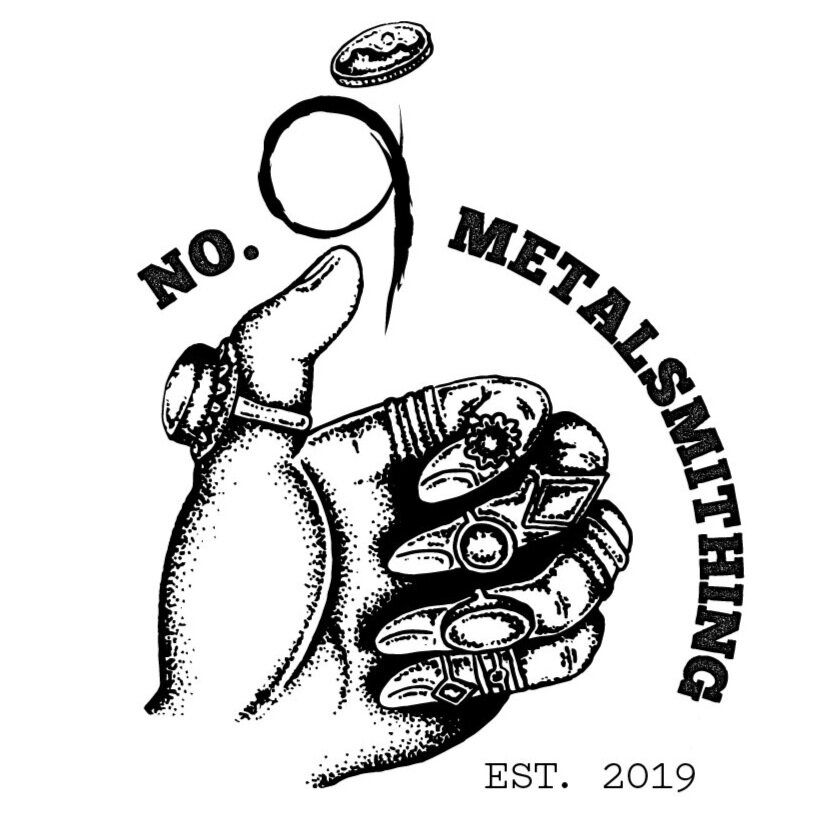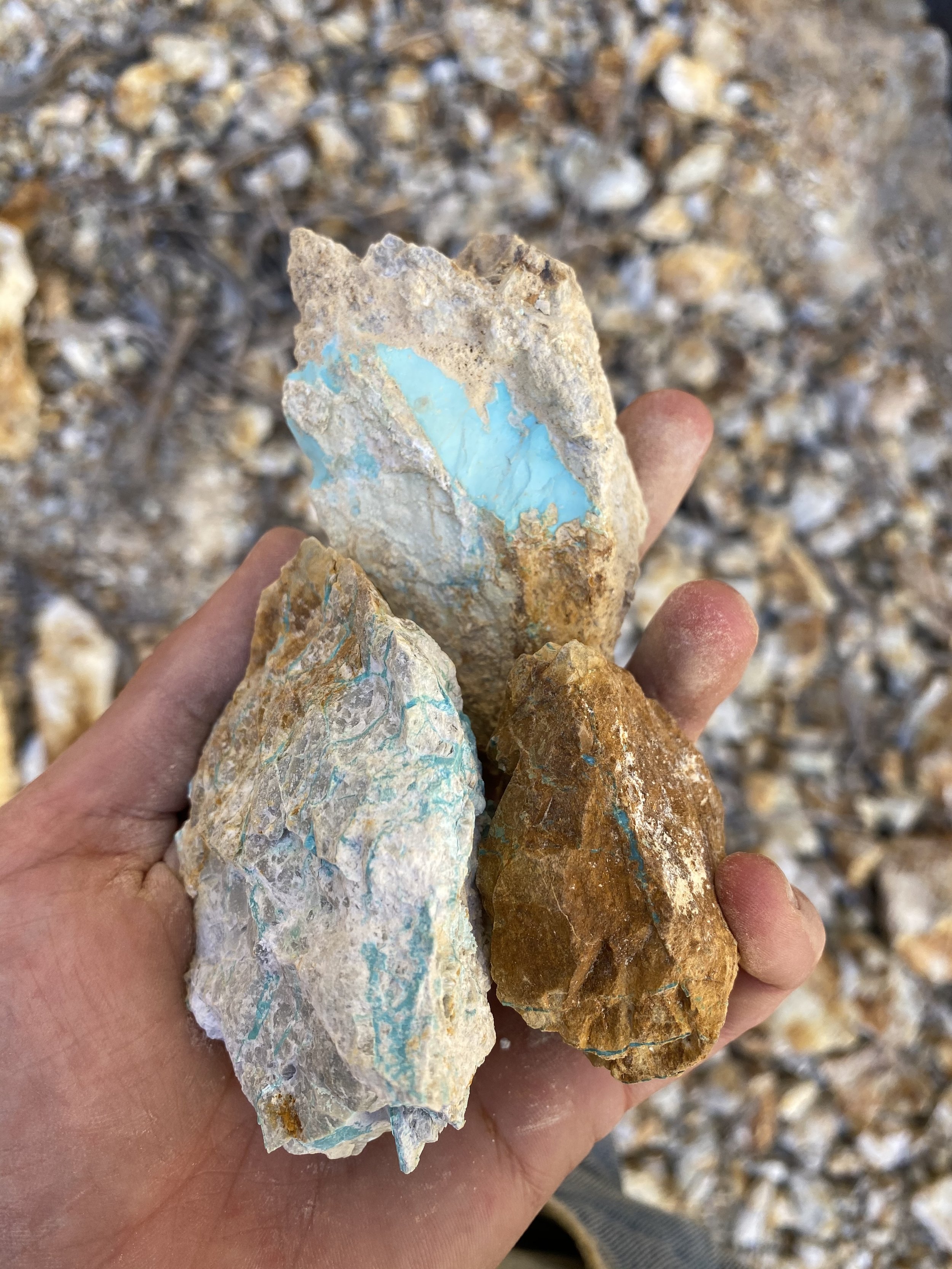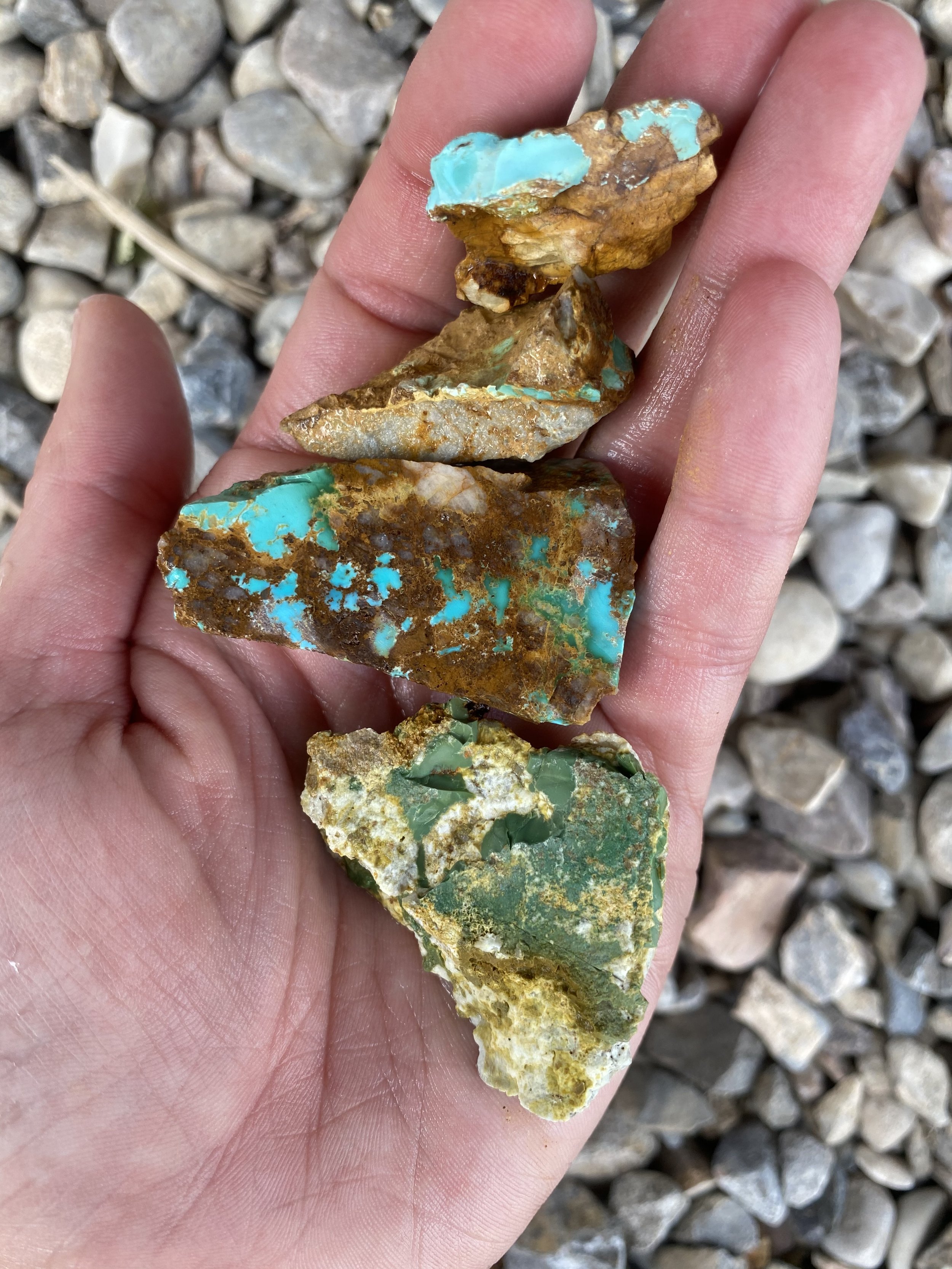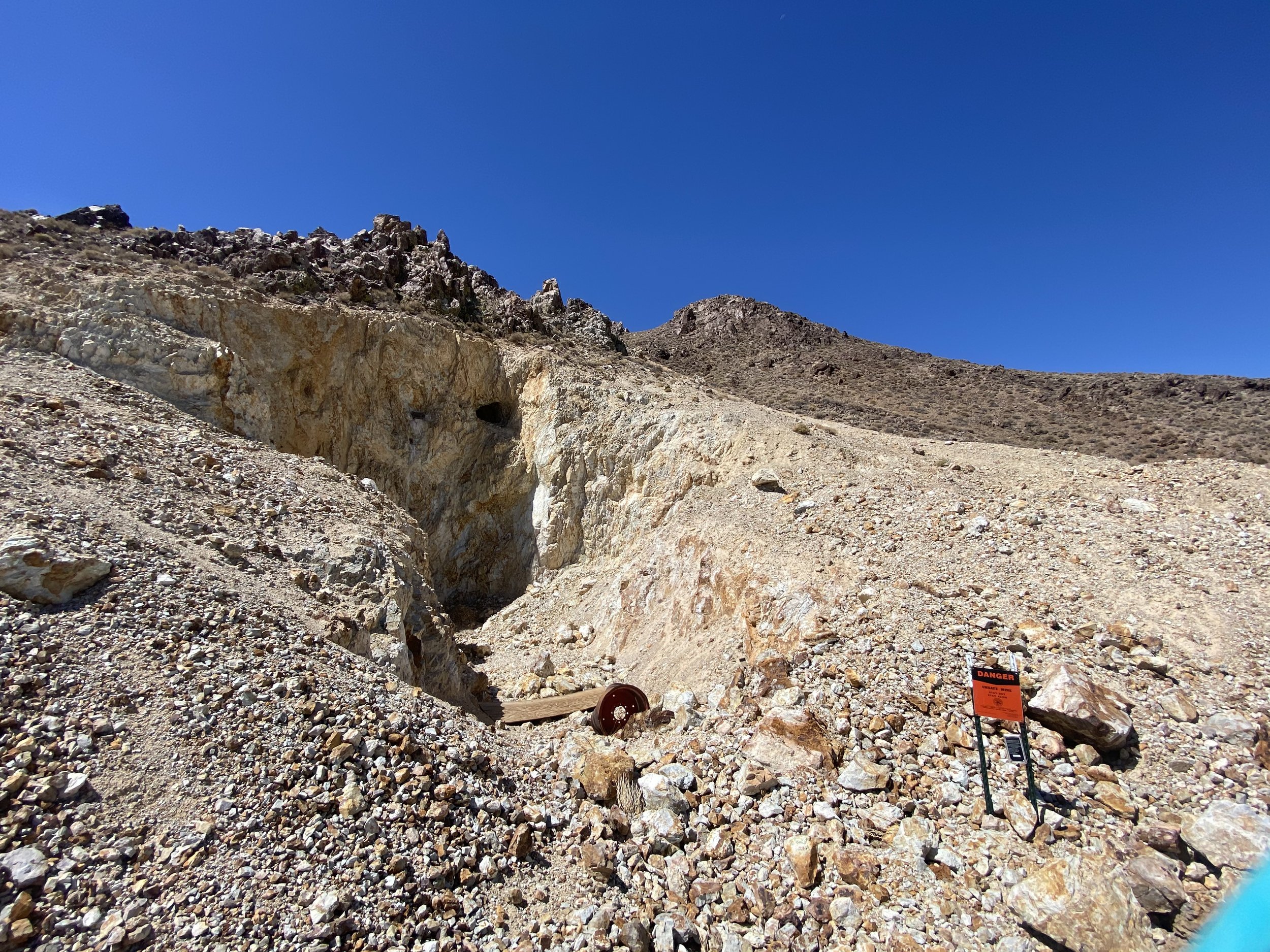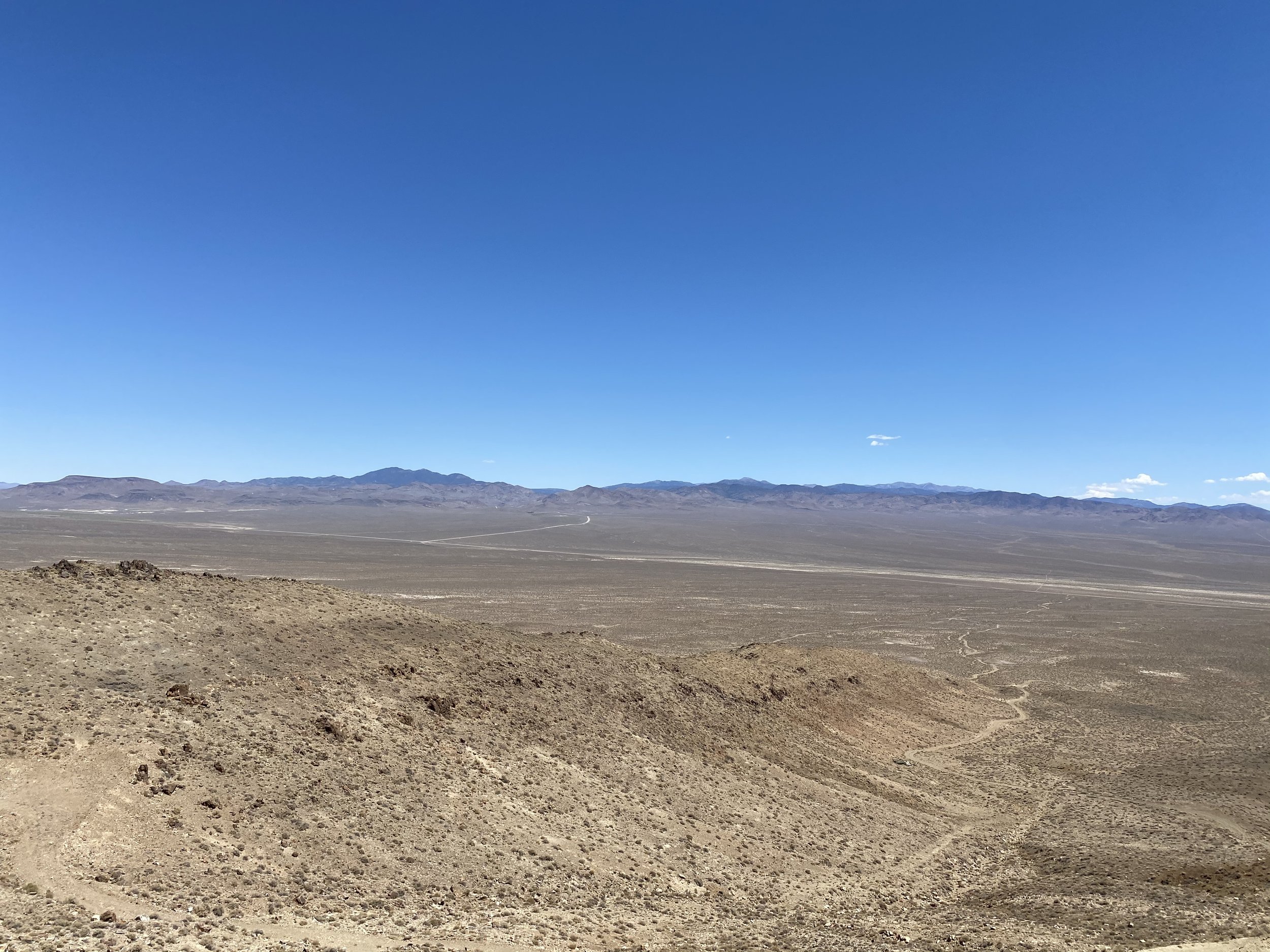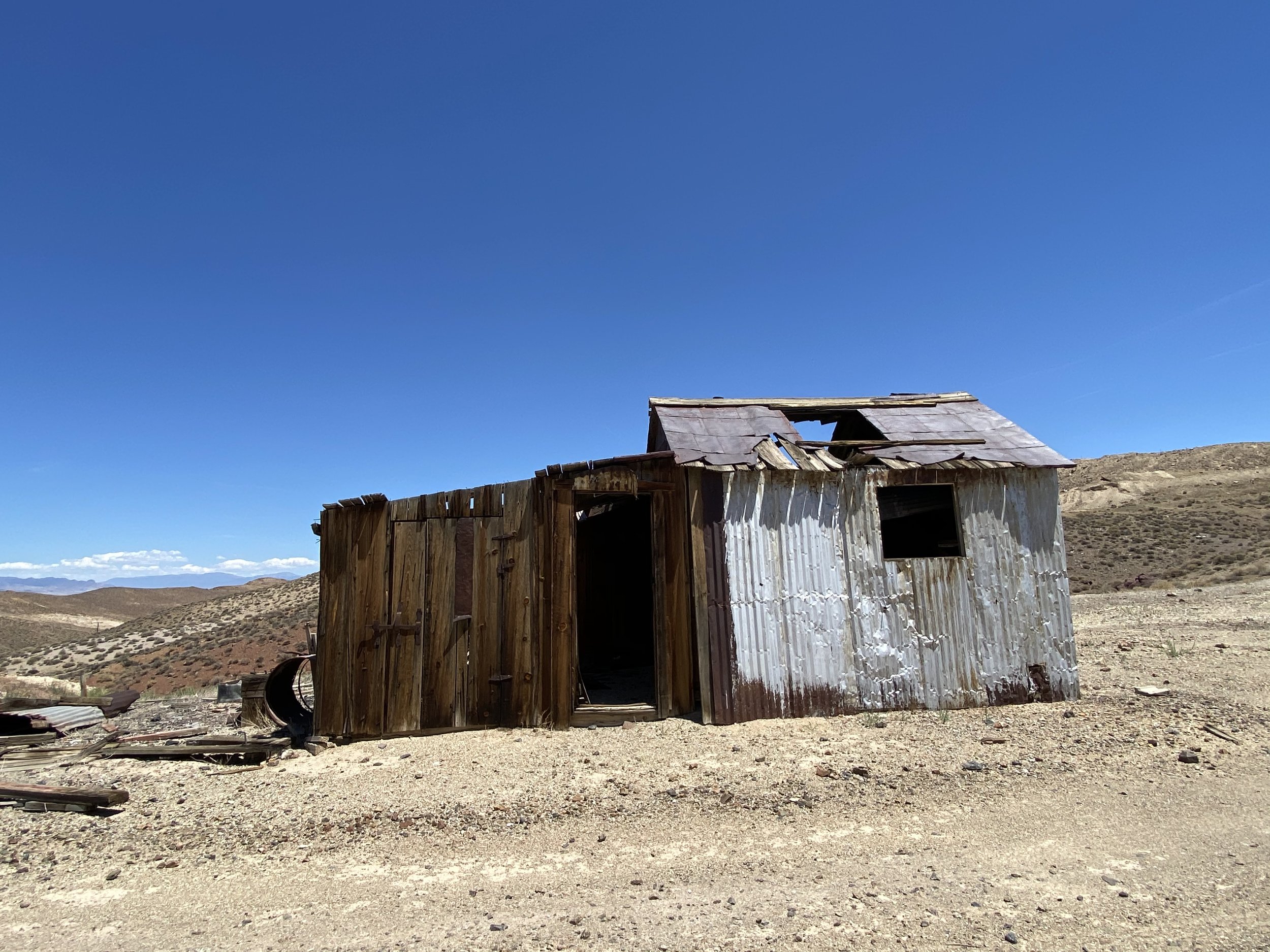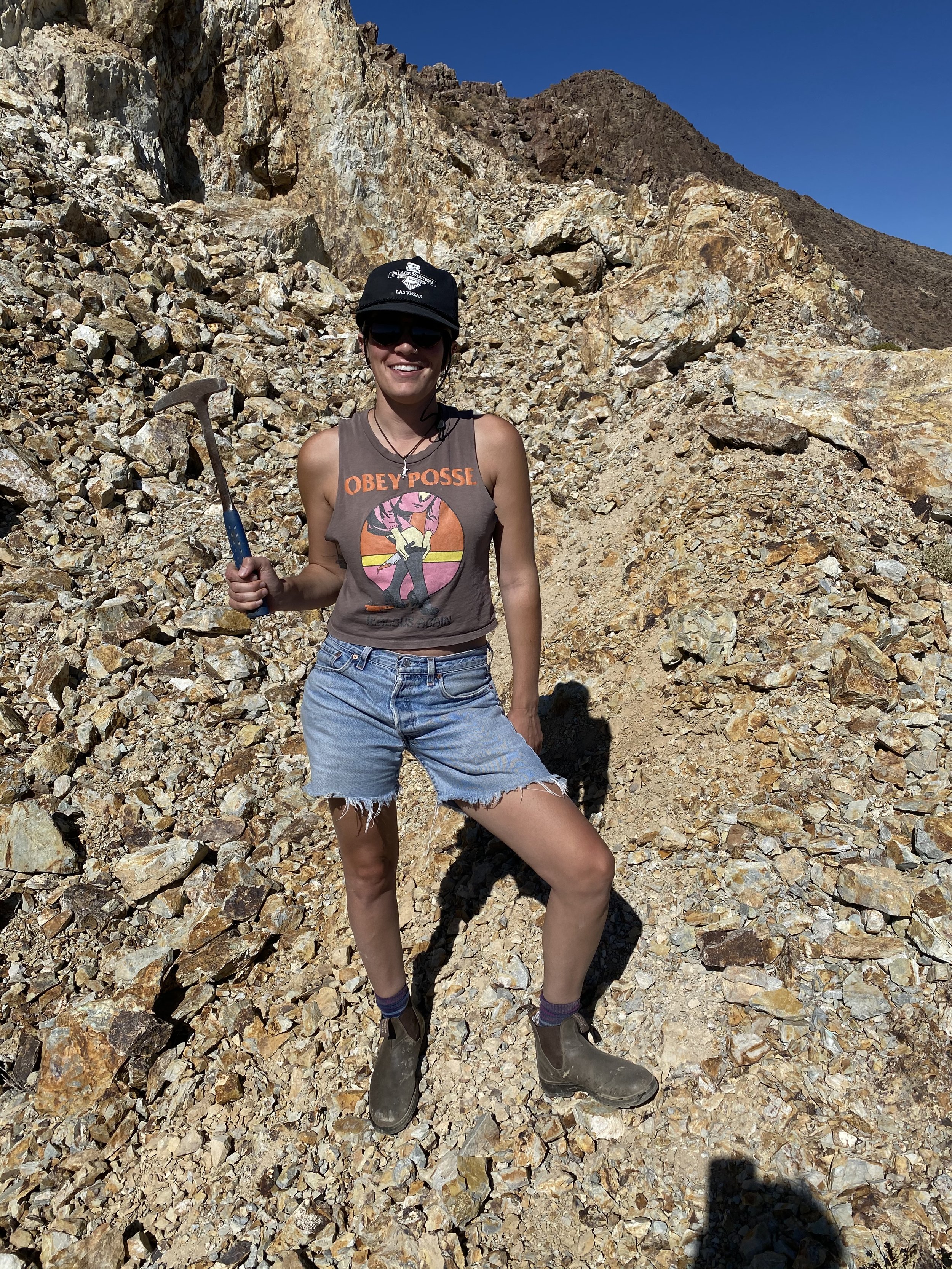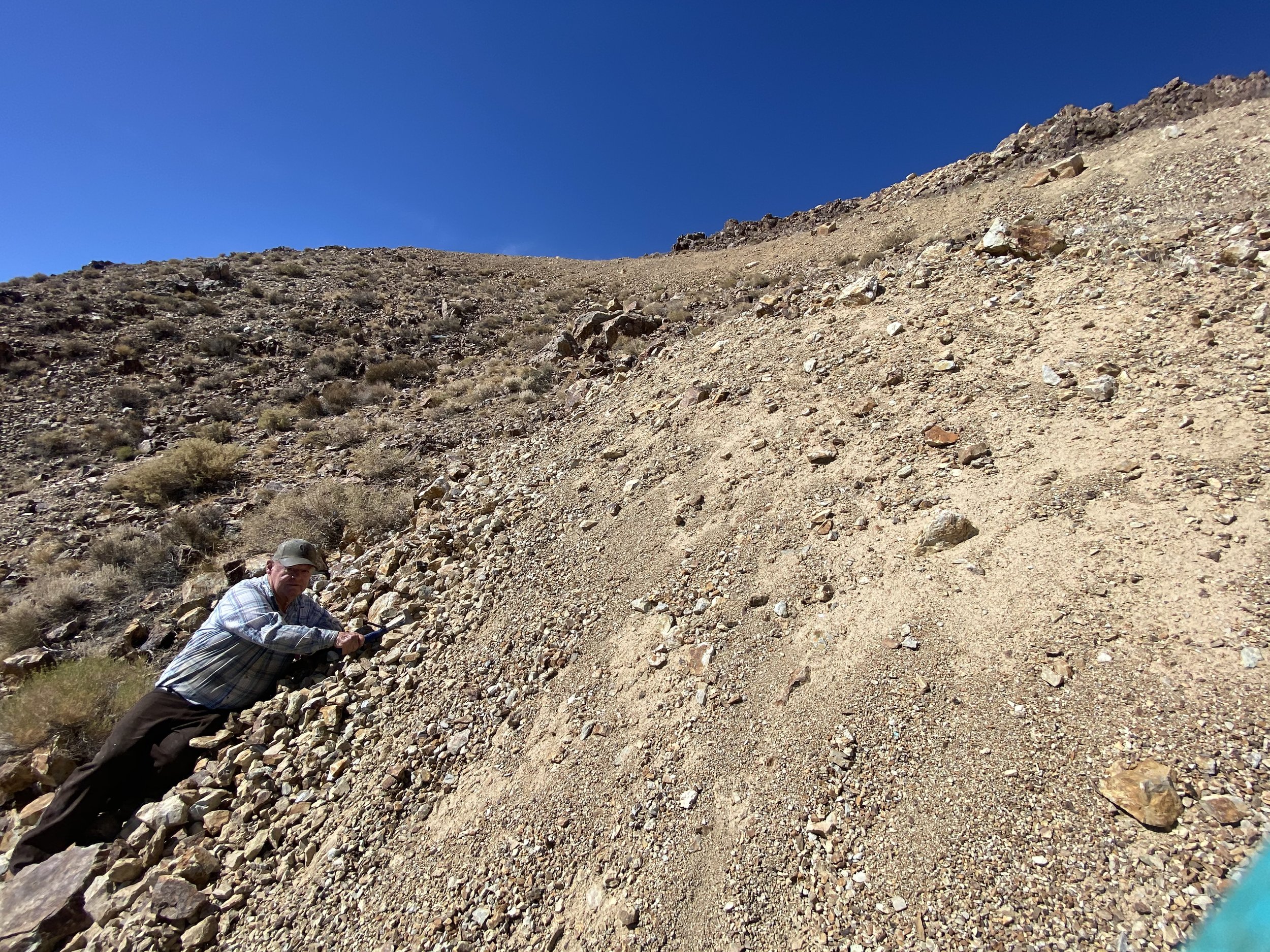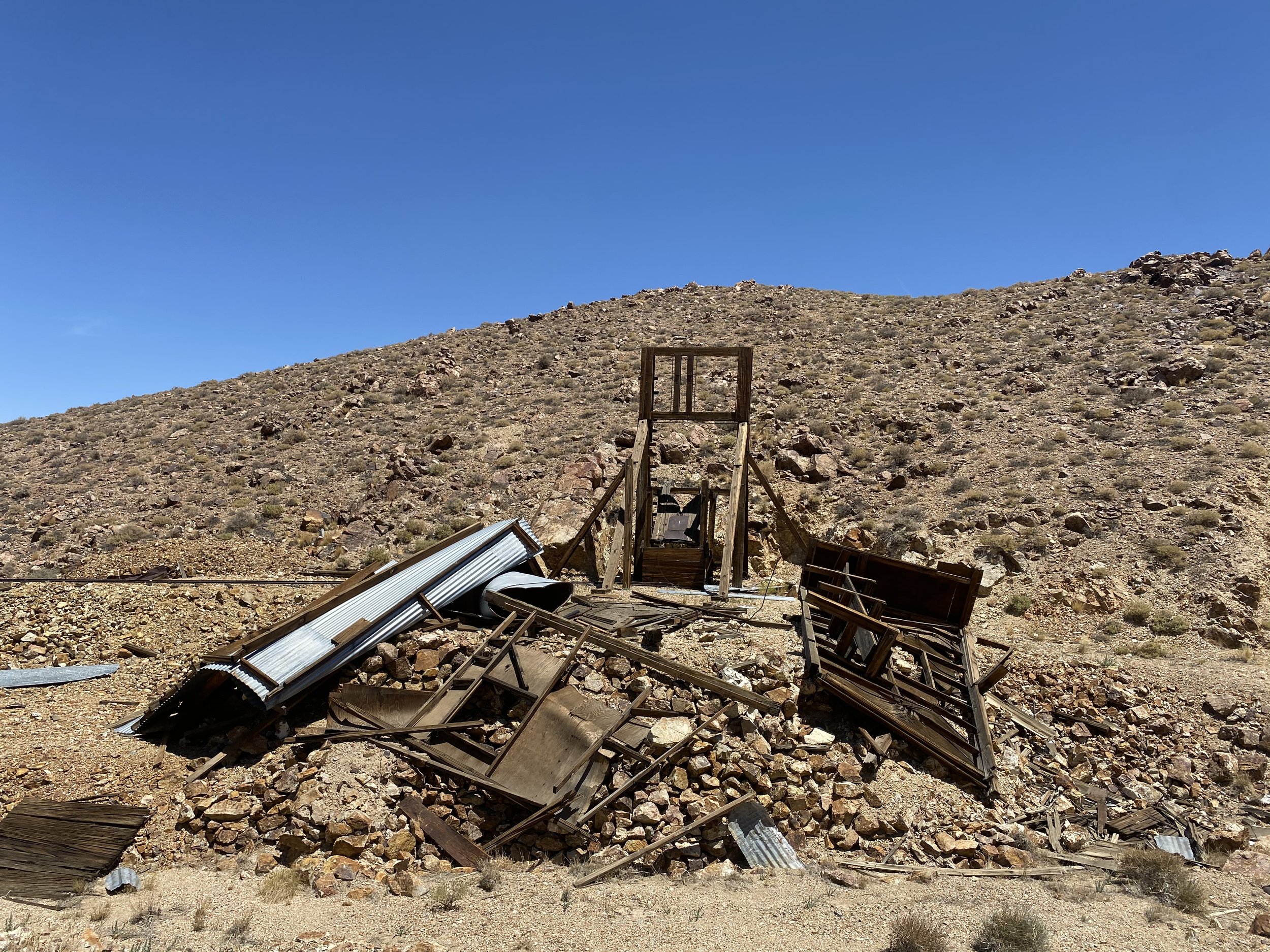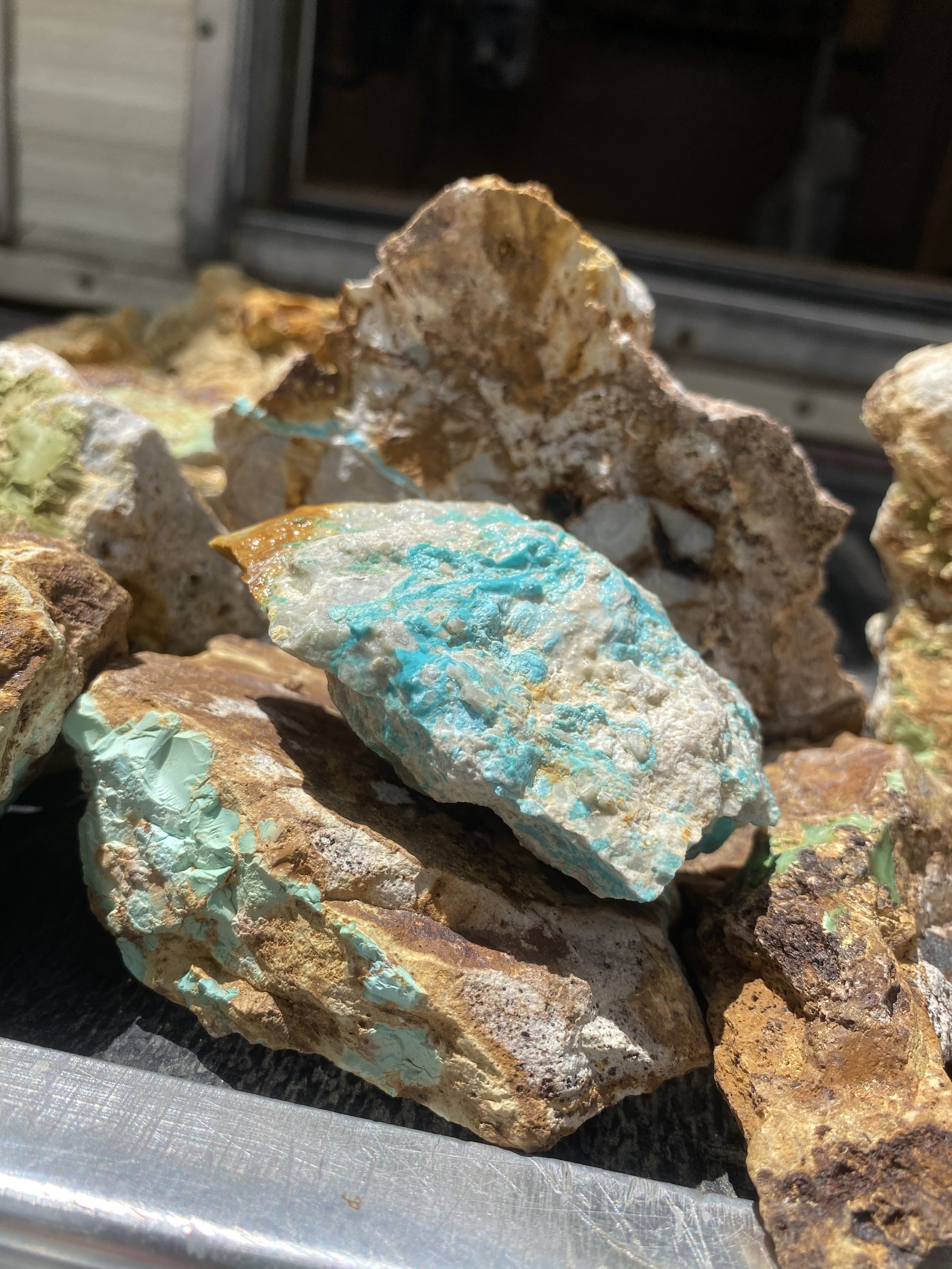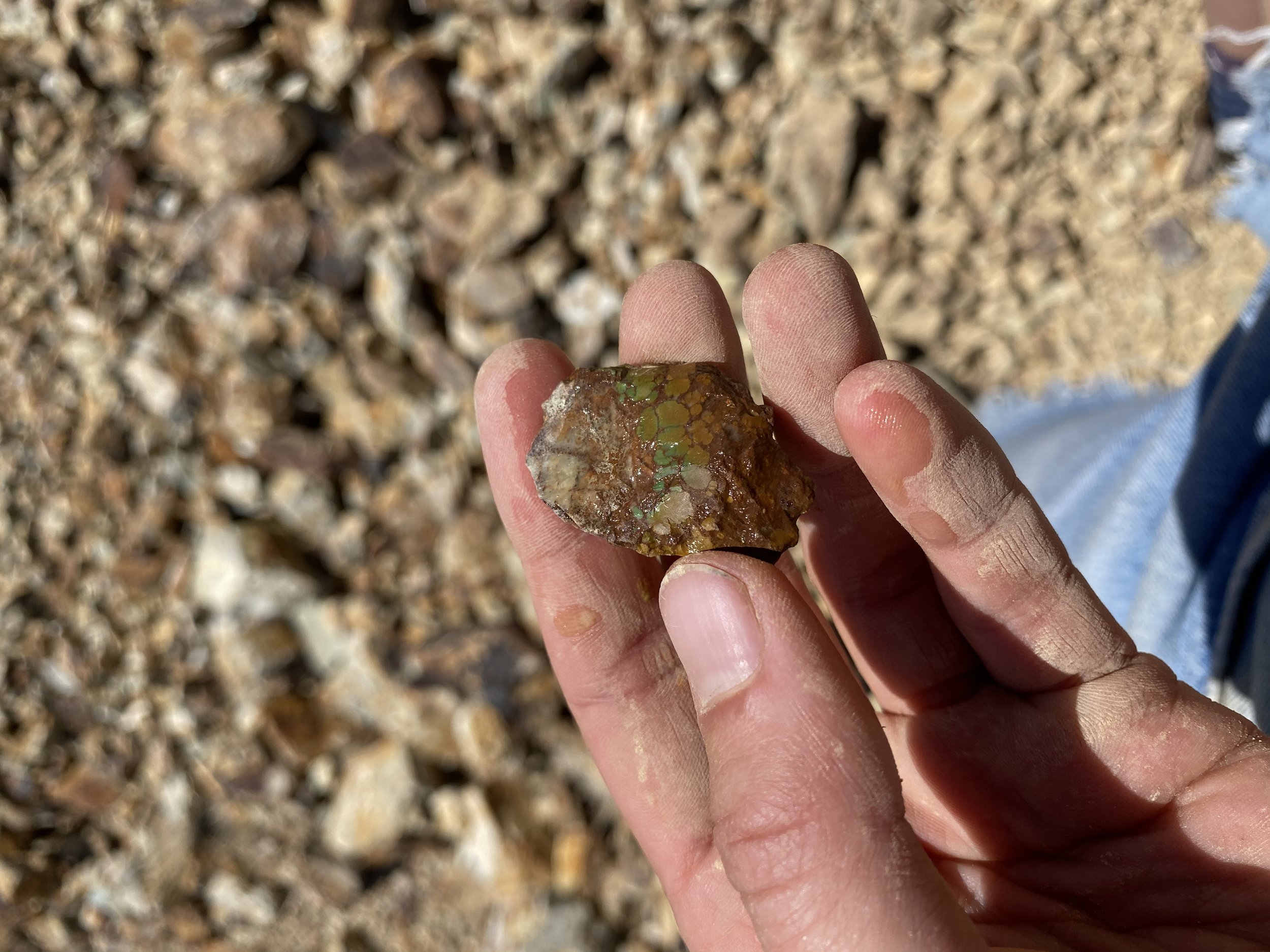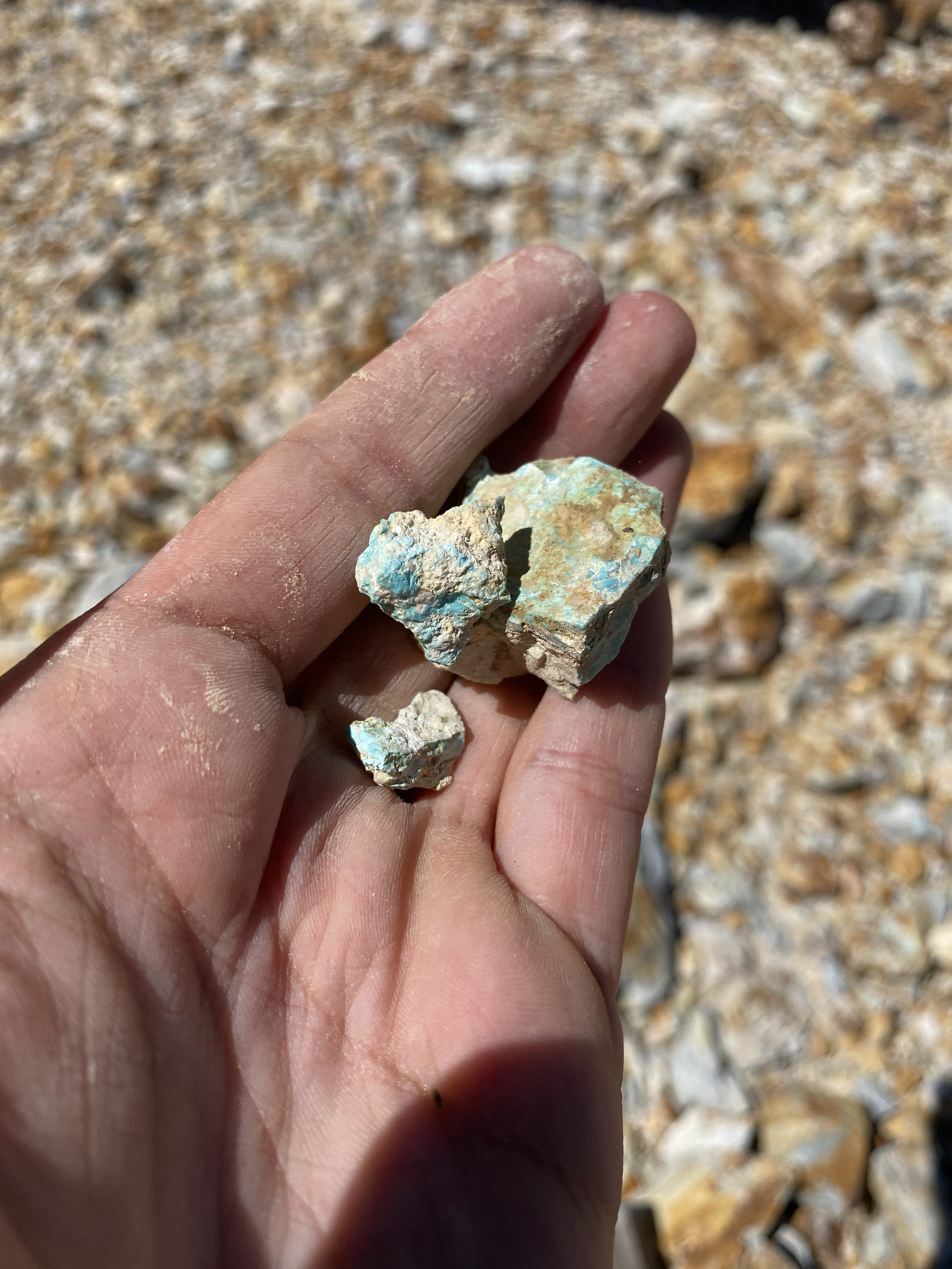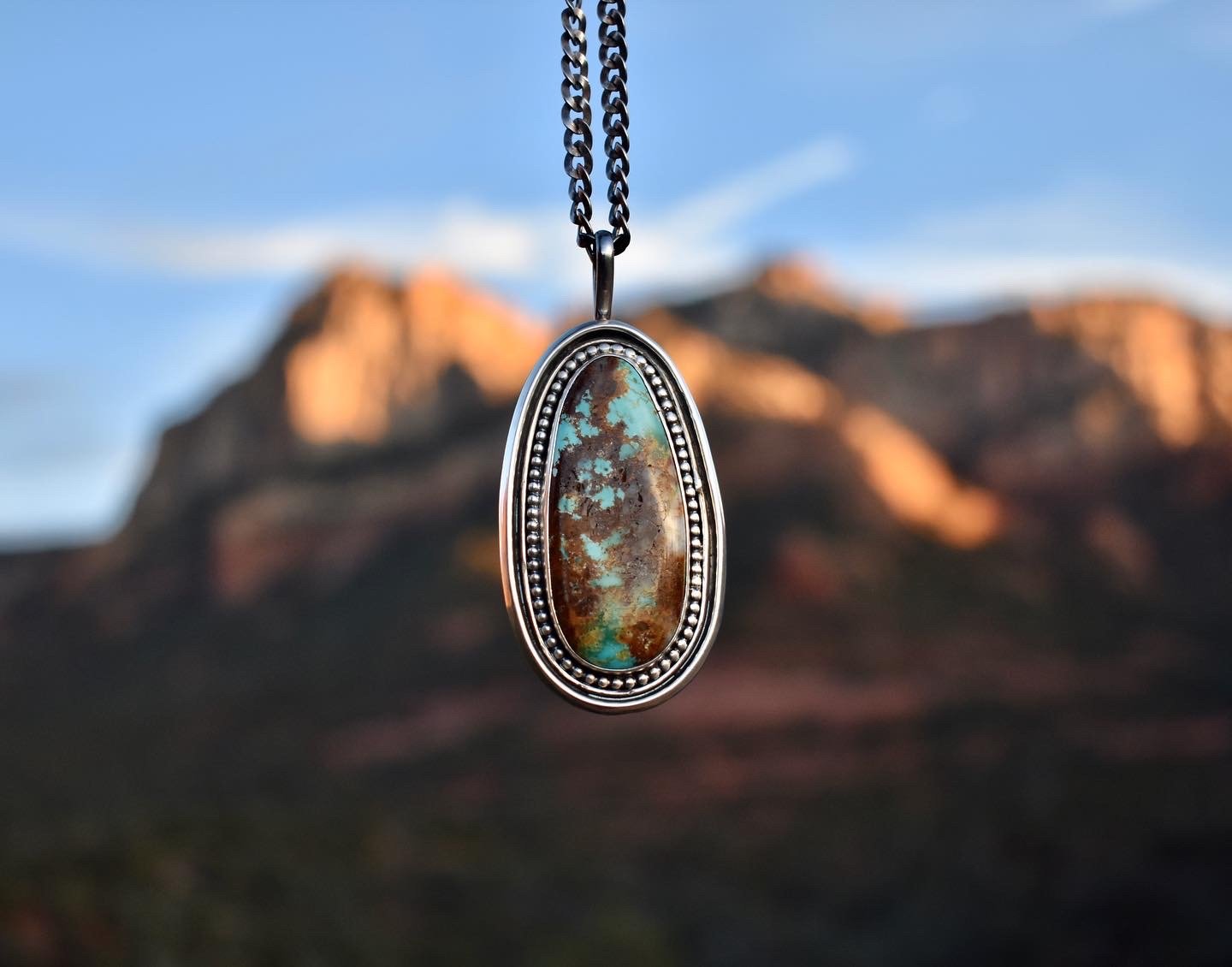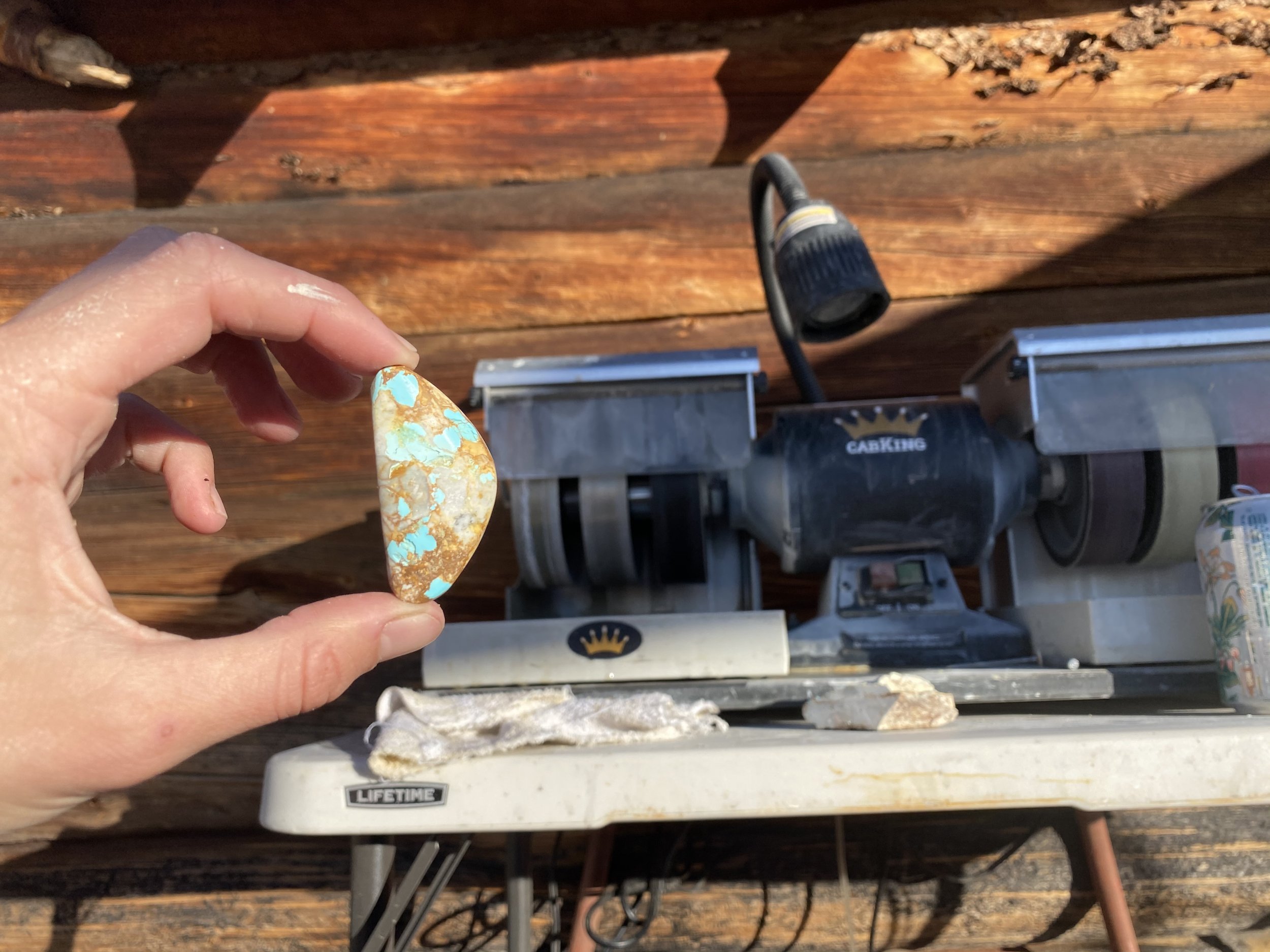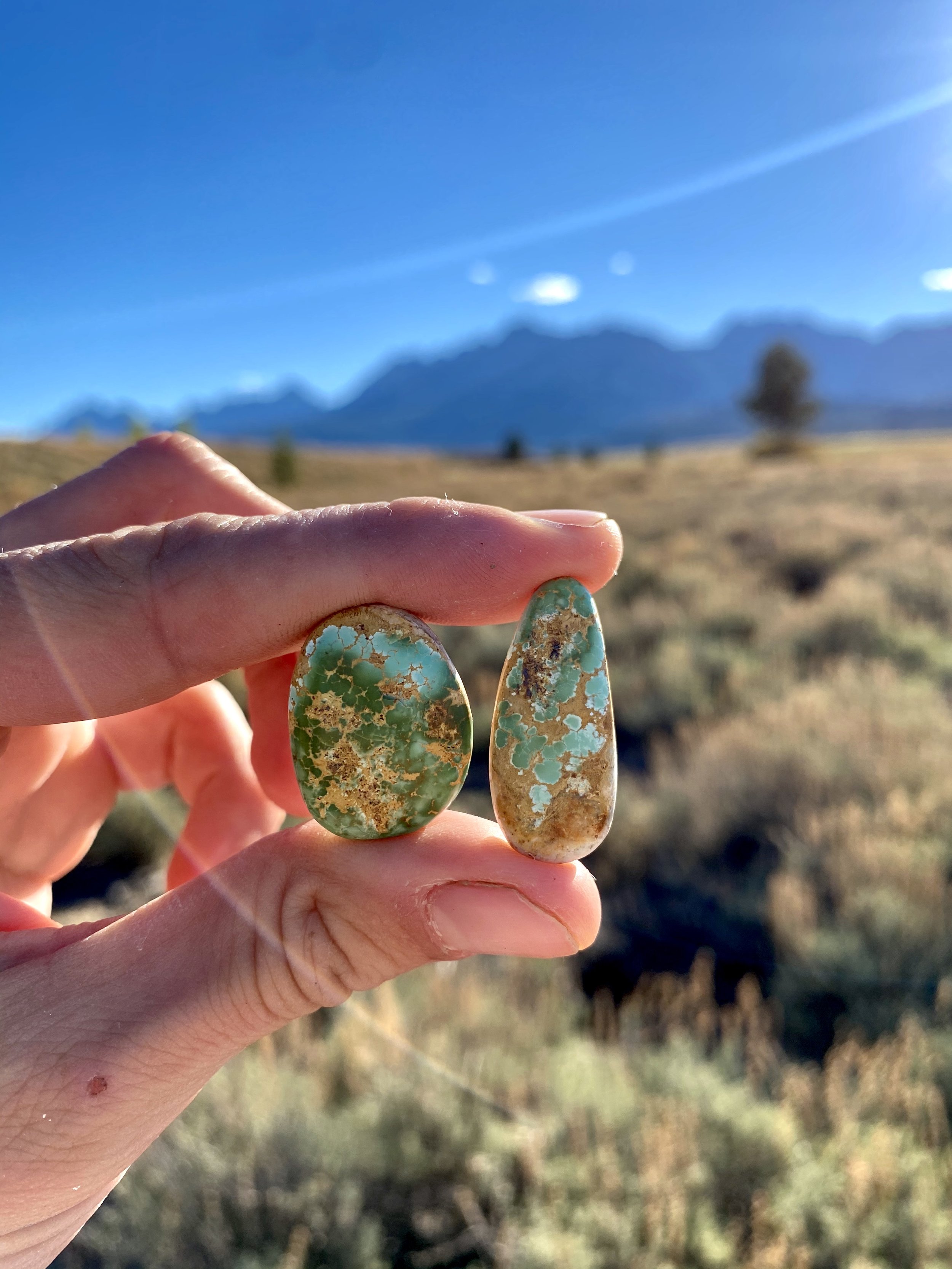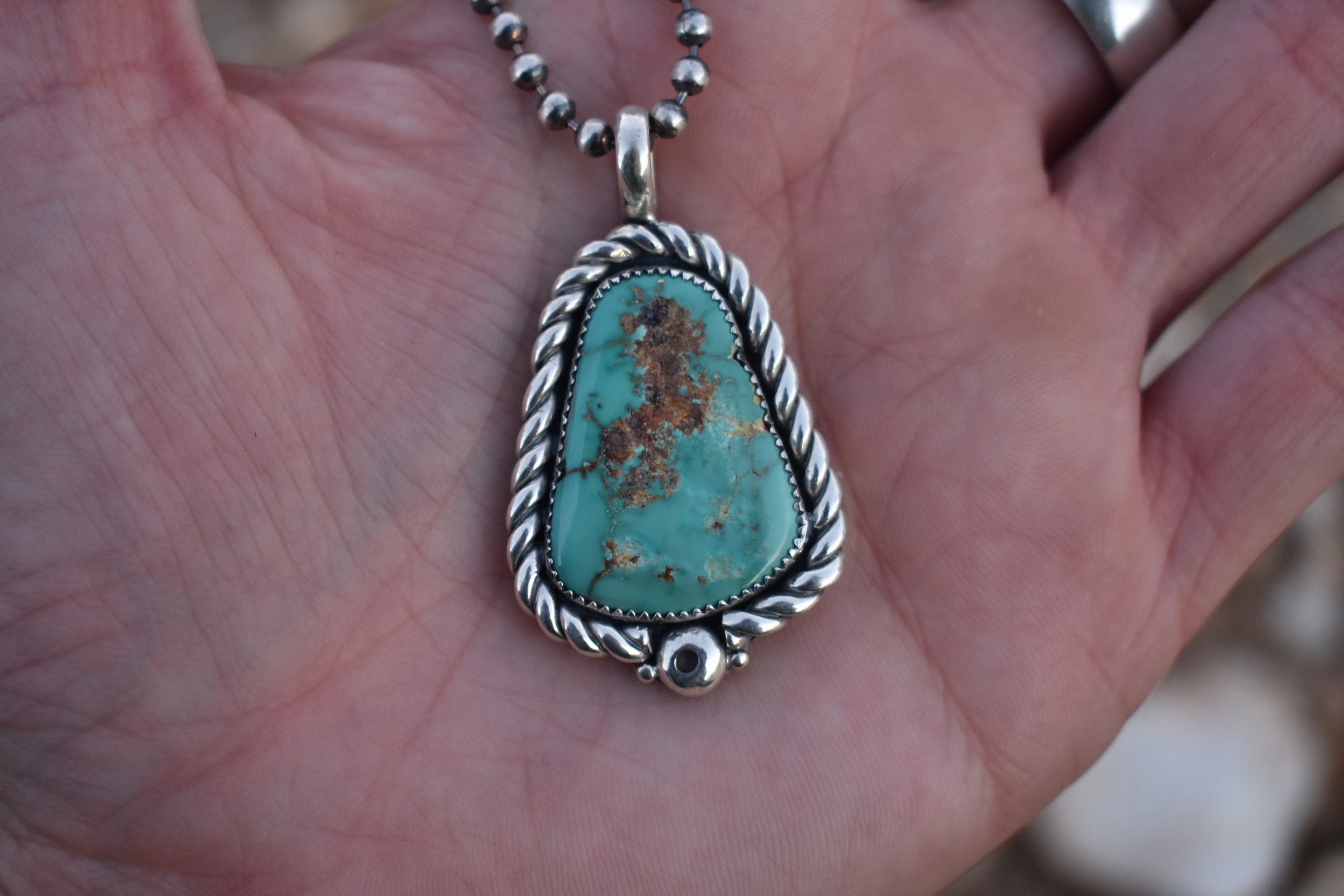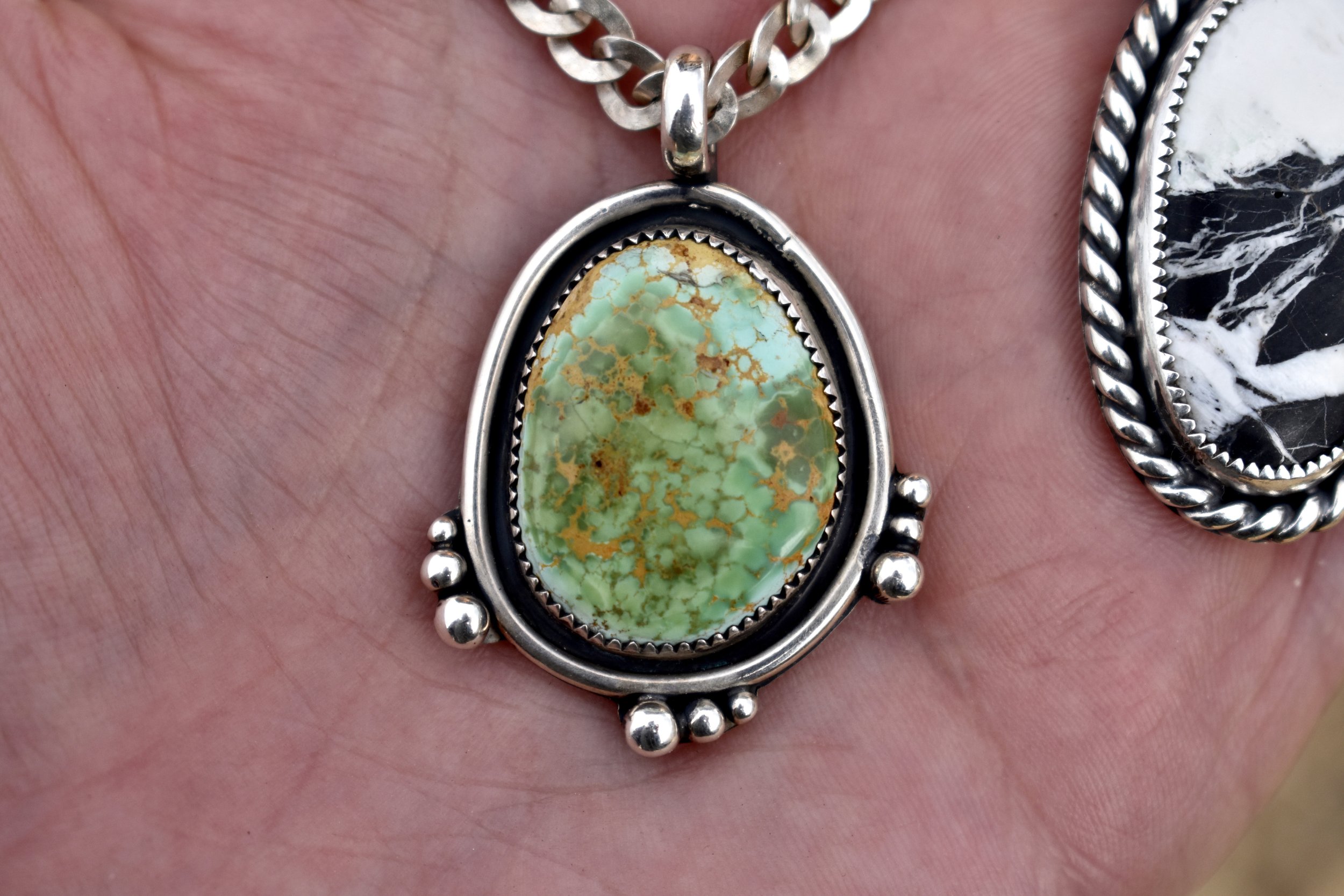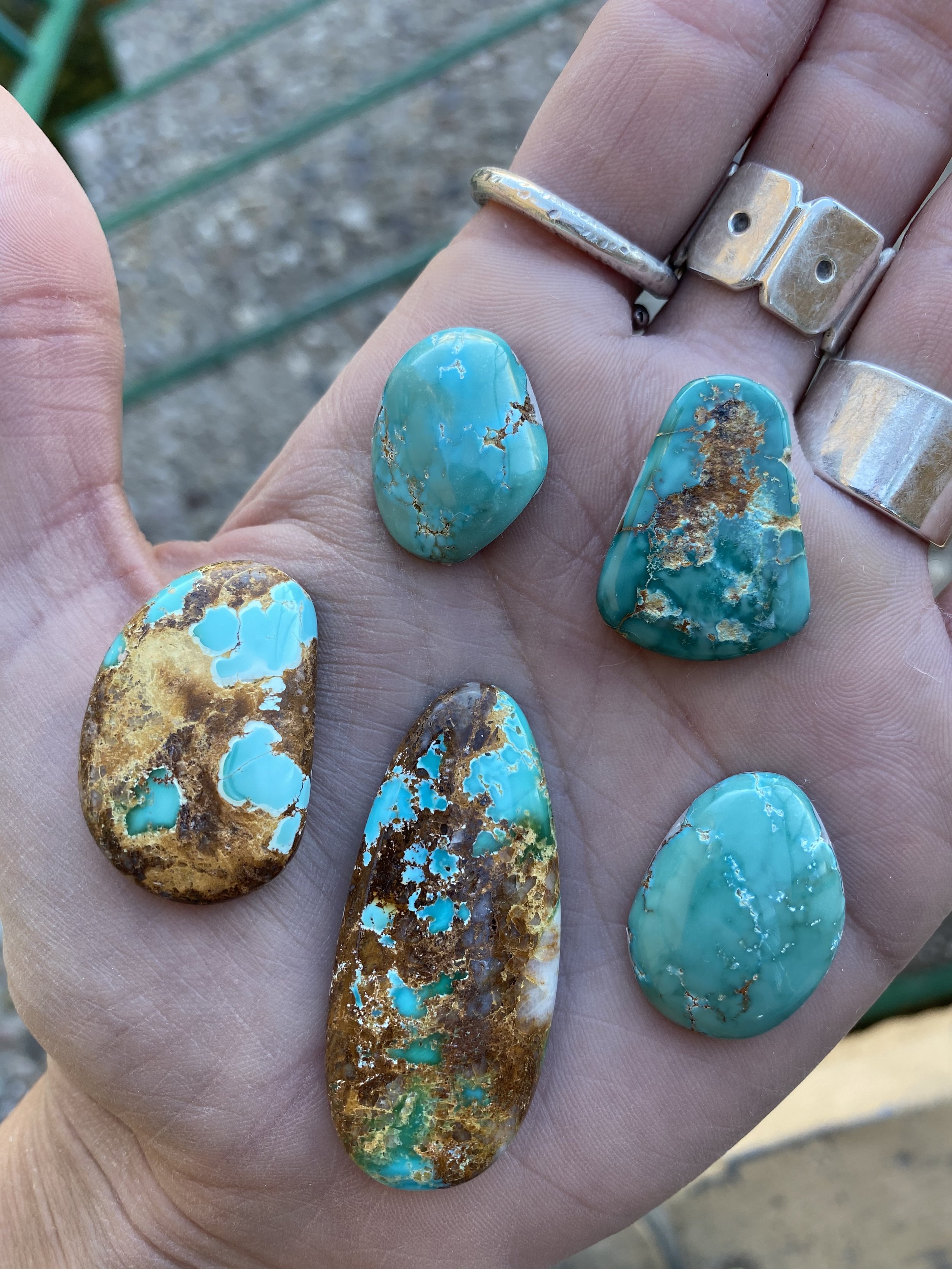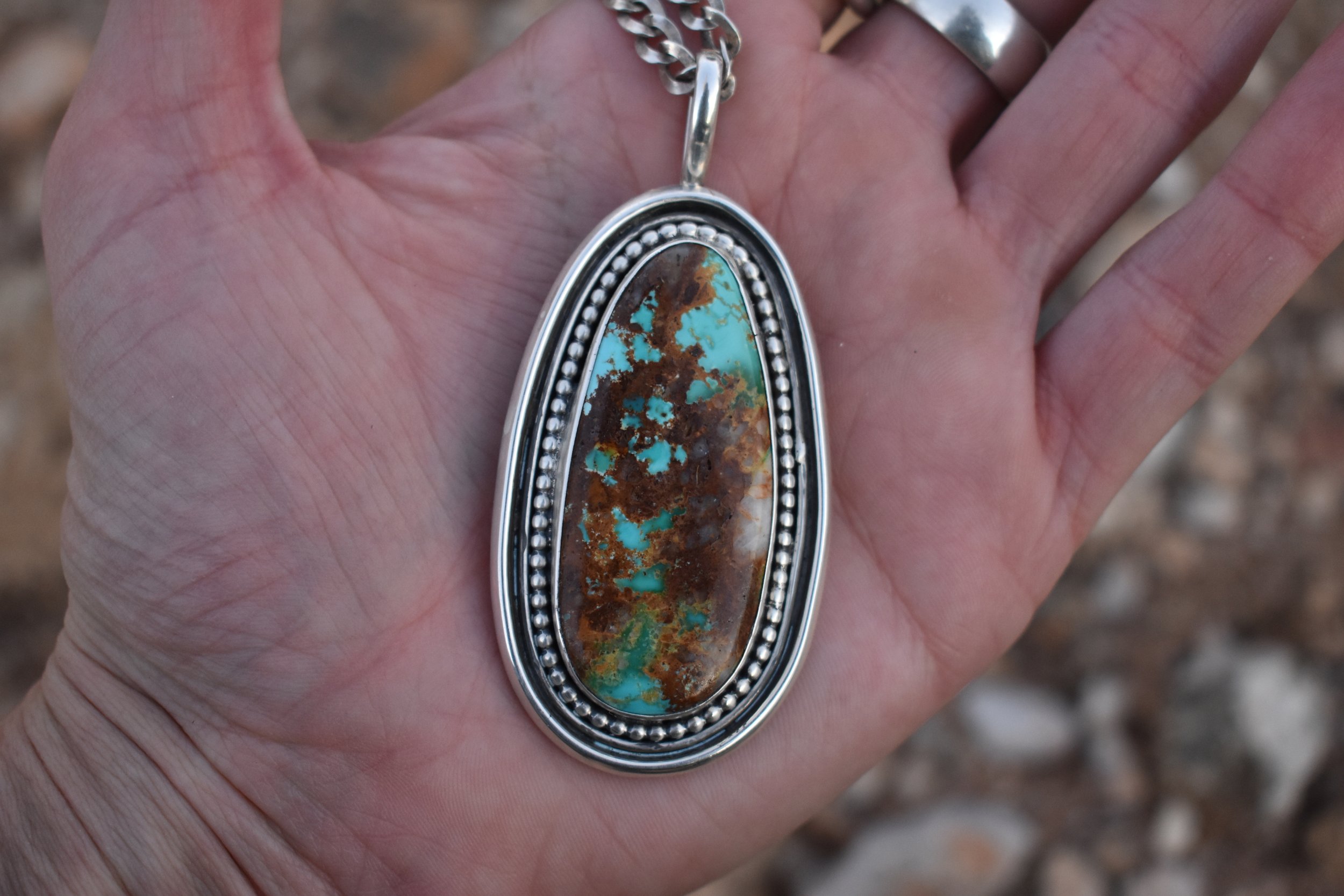turquoise mining in Tonopah, NV
after a handful of years of visiting Mr. David Otteson at gem shows I was fortunate enough for him to take me out for a day of turquoise mining outside of Tonopah, Nevada.
first off, lets talk turquoise. did you know that about 90% of turquoise on the market today is stabilized? what does stabilization mean? Stabilized turquoise is a process of hardening turquoise rough so it can be set into jewelry. Stabilization has been going on since the 1950s. Essentially, soft turquoise is hardened with a special kind of epoxy, to make the stone much harder and resistant. Many turquoise connoisseurs can quickly tell the difference between natural vs. stabilized by licking the stone. If you tongue sticks (especially on the matrixes) - its natural. Only higher grade turquoise can stand the elements of being set into jewelry. So most everything that is stabilized is lower grade, usually called “chalk”.
most turquoise pieces you own, are stabilized. Today, its pretty rare to come across jewelry that isn’t and if it is natural, you’ll know it by the price. (I use a lot of natural stone in my work, which reflects my prices.) Something I personally admire about natural turquoise, is that it changes with you throughout a life time. it absorbs your skins oils, and reacts to the climate that it’s living in. So when you go to pass down a piece of natural jewelry one day, you truly are passing a piece of yourself onwards. next time you go to buy a piece, ask the jeweler more about the turquoise!
to the left is “chalk turquoise and to the right is high grade turquoise
the ottesons have claims on a variety turquoise/varscite mines in Nevada. they are three generations of miners, who have claims on some of the most sought after turquoise in the world. specifically the Royston mine. the Royston claims were first discovered in 1902. The Royston mine produces some breath taking turquoise ranging in color from a deep sky blue to dark greens. Often the colors run together in the same stone with the golden brown mottled or webbed matrix. The mine currently produces some very high grade material, but in limited quantities. Turquoise mining is no joke! The Nevada heat is quite literally deadly. And if you don’t start early, you may have the ravens circling you by high noon!
I was fortunate enough to be brought to the easter blue mine and the royston mine.
it was rough digging at the easter blue mine. the otteson’s use both mechanical digging, and dynamite to expose new veins of turquoise. the road up to the mine was a bumpy, rough one! but those are always my favorite. it lead to a great view of the valley below.
but real quick, would you like to know how the earth makes turquoise?
Turquoise is a hyrous phosphate of aluminum, which contains a small percent of copper. Copper is what creates the blues, where turquoise that has more of an association with iron is often more green. If the mineral contains zinc, the turquoise mineral will be a yellowish color. Turquoise is formed when a chemical reaction occurs when water containing specific minerals such as copper or aluminum leaks/seeps through rock. Add heat, water, and pressure, than mix well! Turquoise forms in “veins”, which can then latter form into clumps or nuggets.
Deposits are found in Arizona, Colorado, New Mexico, California, Nevada, Virginia, and Utah. Natural turquoise is considered one of the highest value minerals in the world by collectors. American turquoise is valued by its matrix pattern, color, hardness, and origin. Some of the most valuable turquoise comes from Iran, but turquoise formed in southwest is now known to be of the most valuable in the world - mainly the Royston and Kingman mine being the most famous and sought after.
after hiking around the easter blue mine, we made our way over to the Royston mine, where are prospects were much better. however the sun started become our biggest enemy. it took quite a bit of digging, but we found some nice pieces. I was lucky enough even to find a few nuggets. lots of Royston ribbon was unearthed as well.
all and all, it was a dream come true to go out with Mr. Otteson and learn more about the family’s history in the area, as well as to dig beside a turquoise legend!
most pieces I make, I try to use natural turquoise. which reflects the price point. when wearing natural turquoise jewelry, one must be very careful. turquoise is very porous when not stabilized - so chemicals, specifically those carried through water, can affect and deteriorate stones. I’ve known bartenders who have worn natural rings during work, and completely destroy the natural turquoise in their pieces!
as you all know, I cut most of my stones as well - when cutting turquoise, stones need to be “backed”. placing the piece in a steel epoxy, to harden the back and make sure the pieces don’t crack, as well giving them some cushion well set in pieces.
above are just a few of the pieces cut and framed in silver - that were dug besides mr. Otteson. these pieces have raw character, and will be one of the 10% of turquoise pieces in the wild, that can claim to be natural!
citations:
Facts about Turquoise. History Of Turquoise. (n.d.). Retrieved December 13, 2022, from http://www.historyofturquoise.com/facts-about-turquoise/
Royston Turquoise mine. PuebloDirect.com. (n.d.). Retrieved December 13, 2022, from https://www.pueblodirect.com/pages/royston-turquoise-mine
